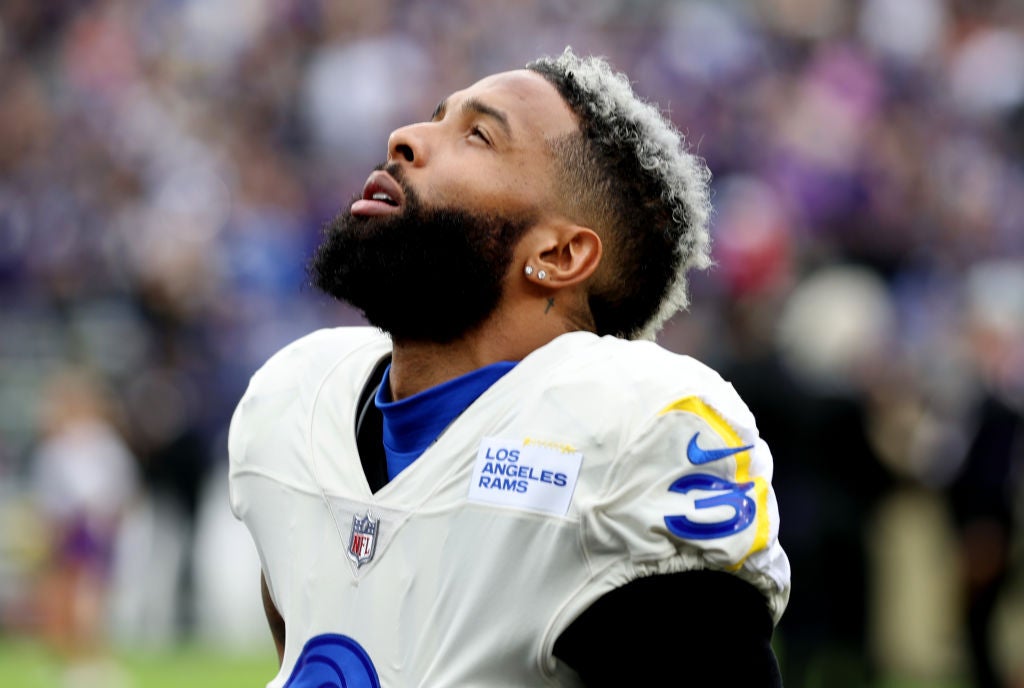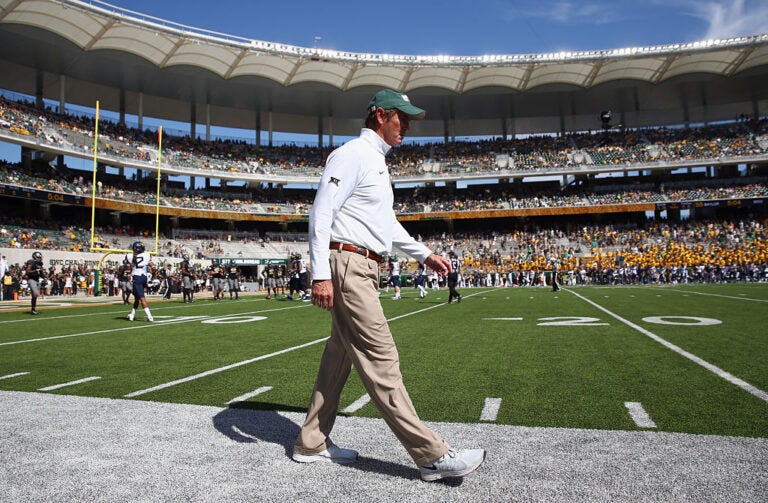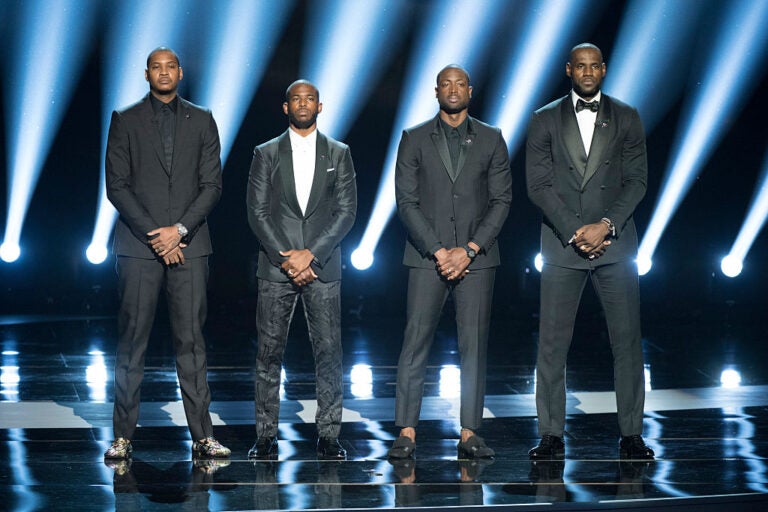Sports Media Needs More Athlete Apologists
Why this matters
Sports reporters rarely have the same lived experiences as the athletes they cover. This tension is harmful, but it could be better if a more diverse crop of journalists were hired who could truly understand and empathize with athletes.
Journalists want to get the story right. We aim to be as accurate as possible when telling a story – for the benefit of our audience. The more we understand the topic or subject, the more accurate and truthful the story will be. The closer we can come to thoroughly understanding a subject, whether by research, life experience, or innate connection, the more authentic the story will be.
Diversity in our profession, one that covers diverse figures and serves a diverse audience, is not a radical idea. It is common sense – if any sense of truth is what we’re seeking.
But today, sports reporters in the United States largely do not represent the athletes they report on. Sports journalists, according to the job market research firm Zippia, are 79.1 percent male, 70.8 percent white, and just 18.3 percent Black or Hispanic. In the three major U.S. sports – football, basketball, and baseball – the majority of athletes are Black and Hispanic at the pro and college levels within both the men’s and women’s games. This disparity in American sports journalism deprives the audience of accurate, balanced storytelling and makes the profession look stale and outdated, like a National Basketball Association team content with playing halfcourt basketball and refusing to use the three-point shot in 2022.
As a result, athletes are often poorly covered because of this lack of diversity at newspapers, TV stations and online outlets. In a recent study from the University of Texas, over 1,000 Black Americans were asked to grade news coverage of Black communities by United States journalists on a scale of 1 to 7. The average of the answers was a paltry 3.3.
Whether it’s bias, ignorance, or outright malice, Black athletes and other athletes of color are often mischaracterized or misperceived by members of the media. When reporters cannot relate to their subjects, their stories come out worse. Athletes who speak differently, dress differently, or express themselves differently in competition are still characterized by many in sports media as negative traits; they are not, of course.
Still, by looking past or eliminating these differences between reporters and the athletes they cover, a more nuanced and accurate version of sports coverage is possible.
Lost in Translation
National Football League star Odell Beckham Jr. was characterized by media as a selfish player and a poor teammate during his time with the New York Giants and the Cleveland Browns, despite teammates’ overwhelmingly positive comments about him. He was described as a player a team could not win with – until he was traded to the Los Angeles Rams and did just that, playing an integral role in their 2022 Super Bowl victory over the Cincinnati Bengals.
It’s not difficult to imagine that if there were more people covering Beckham that looked like him or grew up like him or grew up knowing people like him, the narrative about his character would not have been as harsh. Zooming out, a better understanding of the culture that many athletes come from would lend toward a better understanding and representation of them.
In the 2004 NFL playoffs, after catching his second touchdown in a 31-17 win over the Green Bay Packers, Randy Moss celebrated in the end zone by pretending to pull his pants down and moon the Packers’ fans. Fox NFL announcer Joe Buck proclaimed it a “disgusting act” on the national television broadcast. It was quite an exaggeration, but that was emblematic of the way Moss was viewed and portrayed at the time.
Like Beckham, Moss was characterized as a me-first teammate who was not a winner. However, he proved that narrative to be wrong when he was traded to the New England Patriots, where he was part of the 2007 team that finished the regular season undefeated and lost to the New York Giants in the Super Bowl. Now, besides being a Hall of Famer, Moss is well-respected NFL analyst for ESPN, which is ironic considering the way he was covered by the media as a player.
Another athlete who was infamously misunderstood was Allen Iverson, a NBA player with the Philadelphia 76ers. Like Moss, Iverson came into professional sports with baggage (and a criminal record) from his teenage years. He also identified with hip-hop culture, donning tattoos and a signature shooting sleeve before Black fashion became mainstream in sports. Back in the mid to late 1990s, many in the mainstream sports media looked at the way Iverson dressed and spoke as thuggish and a threat – rather than seeing a young man from a different background and culture looking to find himself. Iverson himself called out this dichotomy in a less-remembered portion of his infamous rant about a missed practice.
Iverson also was portrayed as a selfish player incapable of achieving team success until he was named league MVP in 2001 and led the 76ers to the NBA Finals. However, Iverson’s narrative never fully changed, as most of the media never could sufficiently relate to his personality. To this day, Iverson continues to express interest in working for the 76ers and often sits courtside at games, but no role has materialized.
Like everyone else, Beckham, Moss, and Iverson were hardly perfect, and the media had a right to point out their mistakes. Media members also have their own agendas, which includes telling and creating stories that are unique and that bring attention to their publications.
When NBA veteran and attorney Len Elmore played for the New York Knicks and New Jersey Nets, “there were like eight daily newspapers,” he said. “And what I was told – and that’s why I understand – was that you face people who want to essentially create controversy in order to give their paper a scoop. The editors will say, ‘Give me something different than the [New York] Post, give me something different from the [New York] Daily News.’
“You talk about diversity,” Elmore continued, “it’s not just the writers; it’s the people who are in charge. And when you look at newsrooms and social media [for news organizations], still an overwhelming majority of those in charge happen to be white.”
But, if publications are more concerned about attention or “clicks” in today’s day and age, would diversity in the newsrooms change anything?
“I think what tempers the final product would be experience and then personal integrity,” Elmore said. “Quite honestly, it’s hard for a lot of brothers to tear down athletes of color in a way that hurts them when in fact they can look at how difficult it was for them[selves] to get to where they are.”
Whether it be an understanding of the music that is popular with today’s athletes or the slang they use in and outside of the locker room, having writers and reporters who understand and appreciate the culture of the people they are covering goes a long way toward fairly – and more importantly, accurately – representing them.
“I think to the athlete, [diversity in sports media is] about perspective, to be able to have folks identify with experiences, with interpretations, and essentially with culture,” said Elmore.
“For the public, one of the unifying elements of sports is identifying. So, to have people able to not only [report on] the experiences of the athlete, but essentially decode it to the point where folks get a better understanding of who this person is [is ideal]. More than anything else, [a more diverse sports media] creates a basis for identification.”
The lack of diversity in the sports journalism space also perpetuates long-held and seemingly interminable stereotypes. In football, quarterbacks seem to be described differently depending on their race. Lamar Jackson, who won the Heisman Trophy in 2016 as quarterback for the University of Louisville, was the fourth quarterback taken in the 2018 NFL Draft – and the 32nd player overall – because scouts questioned his ability to read defenses and his accuracy. However, Josh Allen, a great athlete who was a less accurate passer than Jackson in college, was picked seventh overall. Even today, Jackson has a higher career completion percentage than Allen, yet Jackson is often described as a quarterback entirely reliant on his athleticism who lacks the ability to read defenses.
“The number one problem when you don’t have diversity in sports media, is the athletes are not viewed as people,” said Andscape senior writer Jesse Washington.
These mischaracterizations permeate all sports, so much so that there is a segment of the mainstream sports media that mocks phrases like “more athletic than you think,” “sneaky athleticism,” or “underrated athlete” when applied to white athletes (who are clearly good athletes). Describing Black athletes as “natural athletes” should also be mocked.
Anyone who has known or competed against high-level athletes understands that nothing really comes naturally. Every professional athlete has spent countless hours in the gym or on the field for many years, no matter how naturally gifted they appear to be. Describing the gifts of a Black athlete as natural removes them of their hard work, discipline, and fortitude.
What’s Wrong With Being an Athlete Apologist?
A few years back as my media career was growing, I confessed to legendary sportswriter and friend William C. Rhoden that I was scared I’d be labeled “pro-athlete.” He laughed and told me “if that’s the worst thing you’re ever called, it’ll be smooth sailing.” That response stayed with me, reinforcing that there was nothing wrong with identifying with an athlete in ways that others in the media could not.
While the worst version of racially biased media coverage can affect the trajectory of an athlete’s career, many of the slights that athletes absorb are subtle. Regardless of the tenor of coverage, it’s easy to spot an adversarial baseline that seems to govern the relationship between sports media and athletes. Relating to an athlete, especially when that link is natural based on race, ethnicity, or upbringing, is an easy way to overcome the boundaries that already exist in a heavily guarded and high-stakes industry.
Covering an athlete with an open mind and perhaps sharing their perspective is, in my mind, nothing to apologize for. It should be applauded. Journalists who can relate to and tell the athlete’s side of the story are not apologizing for the athlete; instead, they are trying to accurately portray the athlete to the public. Presumably, journalists cover sports because of their connection to the games and appreciation for the skill needed to compete at the highest levels. They are supposed to be a conduit between fans and the people who play for, coach, and manage teams. An adversarial relationship as the norm makes no sense. As Seattle Mariners broadcaster Dave Sims asked, “If you’re that down on sports and down on the people in sports, then why do you do the job? Why are you in the business?”
When it comes to athletes’ portrayal in and by the media, there has been no more controversial issue than social or political activism. Activism is as American as football, so it is always surprising to see large segments of the media and society taken aback by it when sports figures lead the way, such as when Fox News host Laura Ingraham famously told LeBron James, a philanthropist and voting rights leader, to “shut up and dribble” on her show.
While the media is probably more receptive to athlete activism than it used to be, there is still a sizable segment that argues sports should be activism-free and attacks athletes who take social or political stands. Some sports publications have policies against their reporters commenting about social issues on their personal social media accounts.
Treating athletes as if their social or political opinions should not be heard or hold no weight is akin to denying their humanity and is antithetical to reporting their story. Publications and reporters who disregard stories that deal with athlete activism are essentially saying the same thing to athletes: We don’t care about you outside of your athletic exploits, and we will not tell your full story or present you accurately to the public.
While a few athletes have followings large enough to tell their own stories and have their voices heard and understood without media advocates (see: LeBron James), most athletes’ lives can be affected greatly by an inability to get their points across. Quarterback Colin Kaepernick lost his NFL career for taking a stand against police brutality – because his stand was instead portrayed as anti-police or anti-American. If more of the sports media could properly tell his story and explain his perspective, it may have changed the minds of more of the public, which in turn could have forced NFL owners to reconsider their choice to keep him out of a job.
If gymnast Simone Biles and tennis player Naomi Osaka had the privilege of more media members relating to and telling their stories from earlier in their careers, maybe the culture within women’s gymnastics and women’s tennis would be more forgiving – and neither would have been forced to take mental health hiatuses.
It has been said that journalism’s first obligation is to the truth. Sports fans want and deserve the truth – even if it hurts some of the people some of the time. Diversity in sports media is needed in order to extract and present more of that truth. On the field, there is no doubt that sports can be a unifying force for those participating as well as those cheering. Off the field, sports can do the same if more people are allowed to tell more stories.
Monthly Issue
The Influence of Sports Media
The media shapes how people view characters and issues in sport and society. Today, however, journalists' stories are increasingly found online and on social networks in addition to more traditional mediums like print, television and radio.
As the media itself has changed, its relationship to and impact on athletes and the sports industry has changed as well. Does a more disparate and diverse media ecosystem inspire hope for a better future in sport, or could old pitfalls arise again in an era defined by digitization and immediacy?




